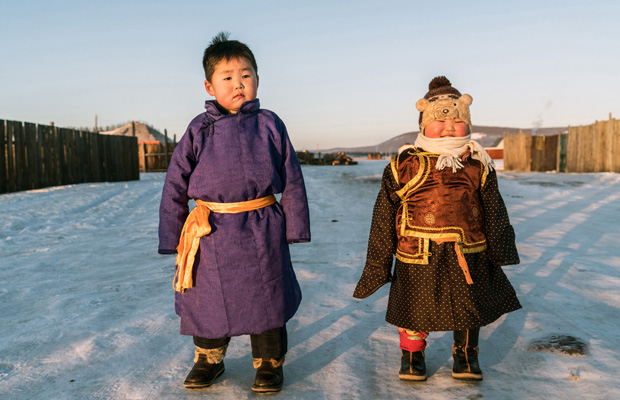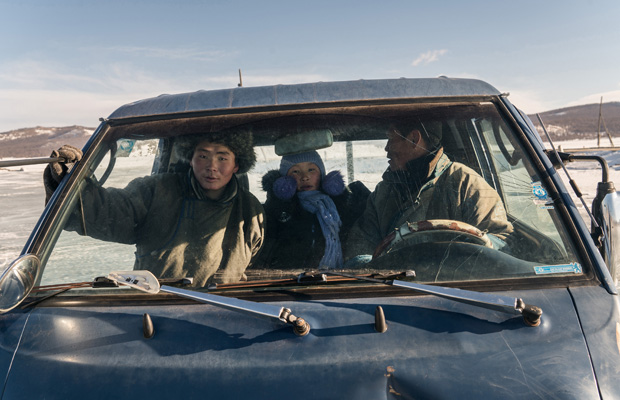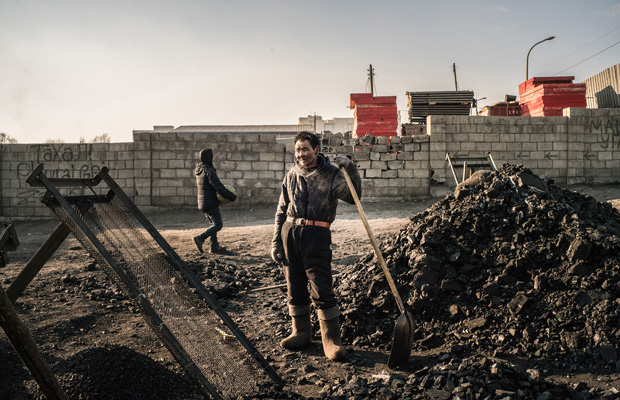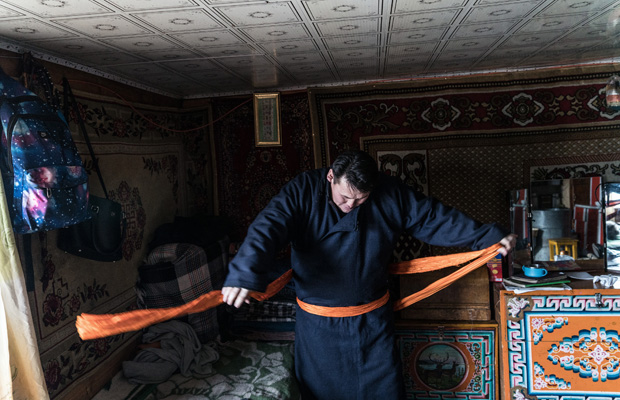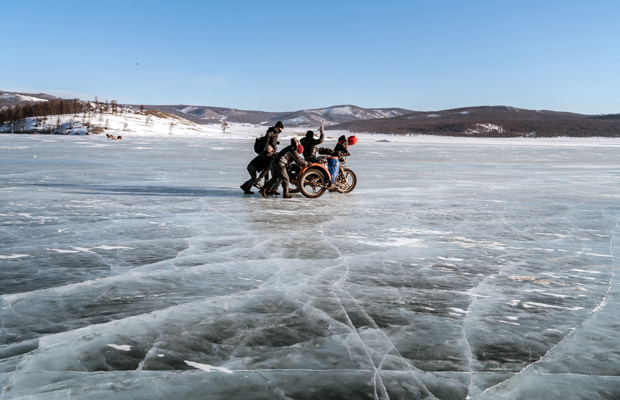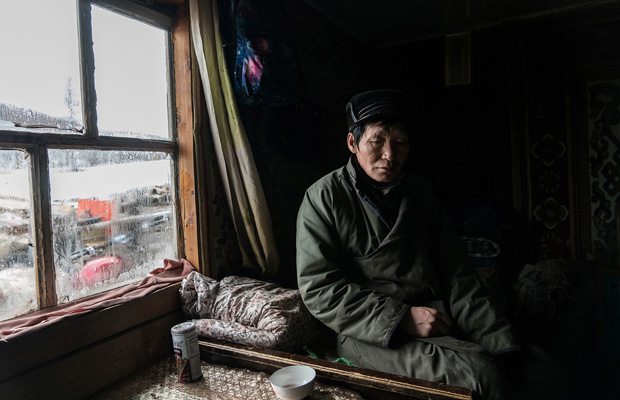Zwei Kinder im traditionellen Deel in der Mongolei, 2019 © Gil Bartz
“We won’t die sleeping.” Dieses unter den Nomaden in der Mongolei geläufige Sprichwort sagt viel aus über die Natur dieser Menschen. Sengende Hitze im Sommer, -50 Grad im Winter: In seiner 800jährigen Geschichte hat das naturverbundene Nomadenvolk gelernt umzugehen mit den extremen Lebensbedingungen der mongolischen Steppe. Der Klimawandel gefährdet diese Geschichte nun: In der Mongolei steigt die Temperatur schneller als im weltweiten Durchschnitt, Dürren nehmen zu, immer mehr Weideland wird unfruchtbar. Und wenn die Nutztiere der Nomaden im Sommer nicht genug Futter finden, überleben sie die klirrende Kälte im Winter nicht. Viele kapitulieren, wollen in die Stadt und schlagen ihre Jurten in der Peripherie von Ulan Bator auf – neben Friedhöfen und Müllhalden. Statt einem besseren Leben warten in der Hauptstadt oft nur Arbeitslosigkeit und Alkohol auf sie.
“We won’t die sleeping” lautet auch der Titel dieser beeindruckenden Fotoreportage von Gil Bartz über die Nomaden in der Mongolei, für die er von Magnum-Fotograf Jerome Sessini unter die Finalisten der The Independent Photo Emerging Talent Awards 2019 gewählt wurde. Die ganze Reportage und noch mehr Bilder von Gil Bartz finden Sie bei uns. Seine Reportagen sind Teil unserer Kollektion #candid.
Familie in einem Lastwagen auf einem gefrorenen See in der Mongolei, 2019 © Gil Bartz
Traditionelles mongolisches Essen, 2019 © Gil Bartz
Portrait eines Kohlearbeiters in der Mongolei, 2019 © Gil Bartz
Methodistenkirche in Ulan Bator, 2019 © Gil Bartz
Ein Mann zieht einen traditionell mongolischen Deel an, 2019 © Gil Bartz
Kinder mit einem Motorrad auf einem zugefrorenen See in der Mongolei, 2019 © Gil Bartz
Portrait eines Nomaden in der Mongolei, 2019 © Gil Bartz
